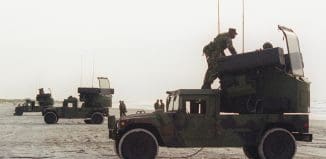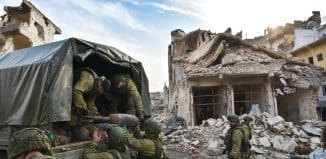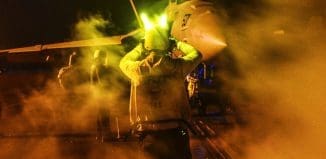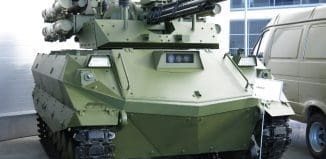Syria’s Chemical Weapons: Is Disarmament Possible?
This post is also available in:  עברית (Hebrew)
עברית (Hebrew)
By Lt. Col. (Res.) Dr. Dany Shoham

In practical terms, if Syria were to fully be disarmed according to the Chemical Weapons Convention, this would in theory bring about the loss of its entire chemical warfare agents inventory – in addition to certain biological toxins it probably possesses which are covered partially by the CWC – the warheads containing/intended to carry them, and the facilities dedicated for
production and development. In such case, and as long as Syria is deprived of nuclear capability, the alternative strategic operational capacities Syria could rely on are ballistic missiles tipped either with conventional or biological warheads, the latter containing pathogens and toxins.
This is basically the comparative calculation Assad has to do in order to decide to what extent Syria will comply with the CWC. In other words, how far should Syria attempt to retain, rather than sacrifice, parts of its CW capabilities? And the actual question indeed seems to be “how far,” rather than “whether.” The Russians and the Iranians might have influence on his decision-making in that regard. First, they both would meticulously take care to eliminate any traces that might indicate assistance given by them to the Syrian CW program, when the latter practically becomes under CWC control. Second, they might expectedly encourage and help Assad to retain parts of Syria’s CW capabilities, particularly the Iranians. Such help may even include clandestine conveyance of CW to Iran, and possibly Russia, especially of components indicating the assistance lent to the Syrian CW program by them.
iHLS – Israel Homeland Security
Irrespective of the Russian and Iranian interests and conducts, the implementation of Syria’s chemical disarmament would at any rate be a very complicated task, because appreciable portions of the CW arsenal have been trans-located, in part untraceably. And translocations will probably be carried on. Some 1,000 to 1,500 tons of Syrian-made chemical warfare agents are to be spotted. It would be a harsh confrontation between intelligence and counter-intelligence systems. However, even if “good will’ and “fair play”may be assumed, theoretically, the timetable seems to be too condensed. It is a huge CW alignment that Syria possesses, with dozens of multiform facilities and installations. Just an up-to-date mapping of this alignment is a very
complex mission. Let alone, that the chances for “good will” and “fair play”are likely slim. The plausible possibility that various Iraqi CW and BW were added to the Syrian CBW inventory meaningfully entangles the situation. If the chemical disarmament of Syria is eventually accomplished, presumably, there is the biological option, which Syria is prone to methodically cultivate as an alternative powerful arm.
First published by the Begin-Sadat (BESA) Center for Strategic Studies, Bar-Ilan Univesity.
Click here to read the full article in PDF format.
Lt. Col. (res.) Dr. Dany Shoham is a microbiologist and senior research associate at the Begin-Sadat Center for Strategic Studies































